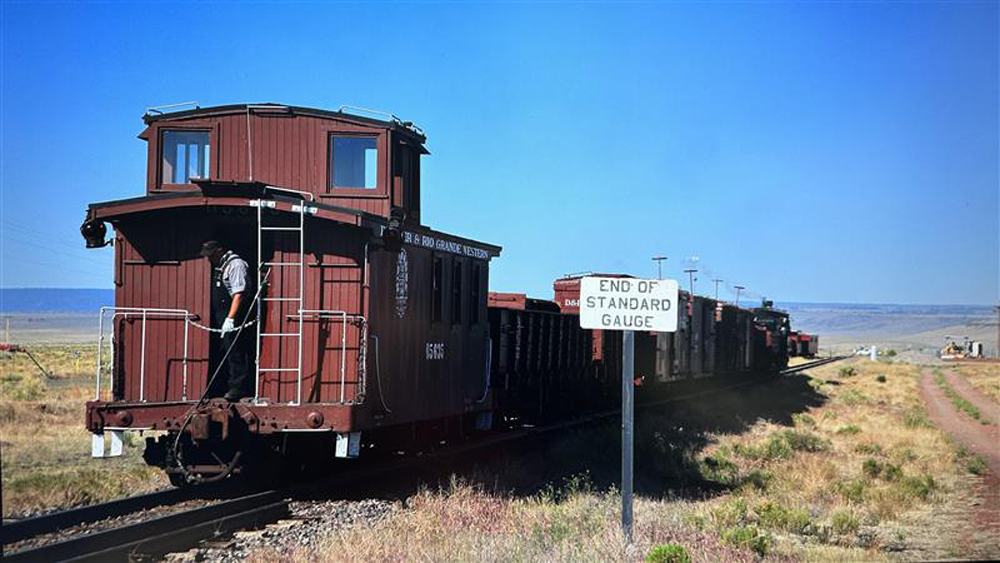
History of track gauge: The gauge of a railroad is the distance between the inside vertical surfaces of the head of the rail. Standard gauge is 4 feet, 8-1/2 inches. This is the gauge used when steam railroading began. It became the common gauge of Britain, North America, and Western Europe — except for Spain, […]
Read More…
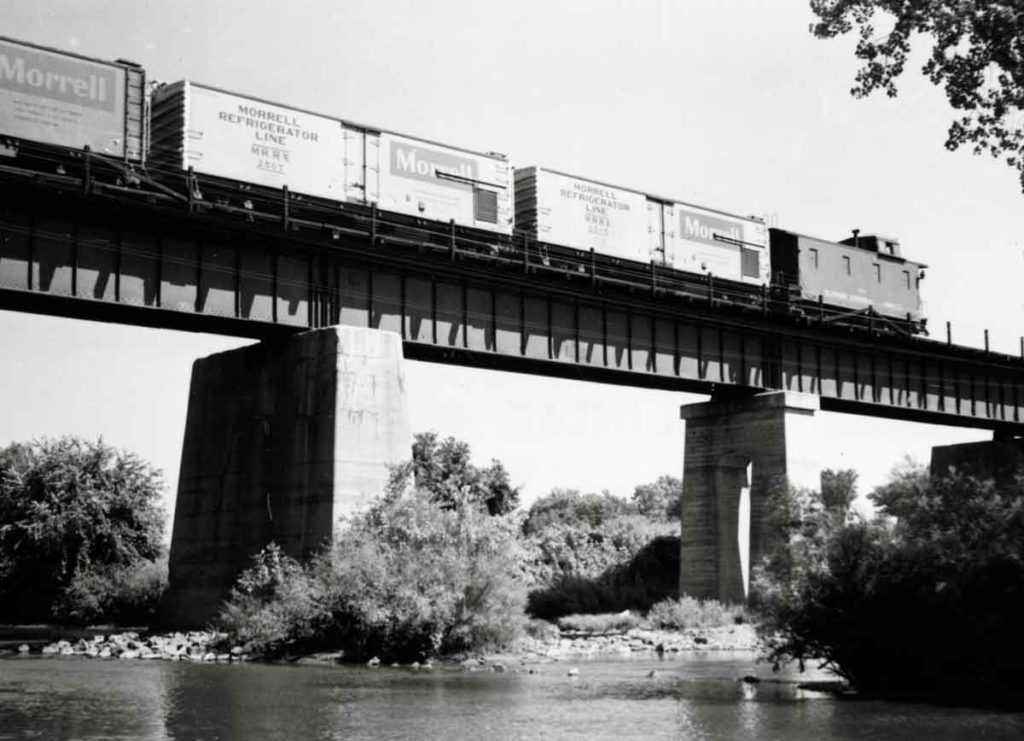
Meatpacking firm John Morrell & Co. led the switch away from ice in refrigerator cars. Two of Morrell’s Mather cars converted to mechanical refrigeration head east on the Illinois Central’s Iowa Division in 1954. They were the first mechanical meat reefers. Basil W. Koob photo […]
Read More…
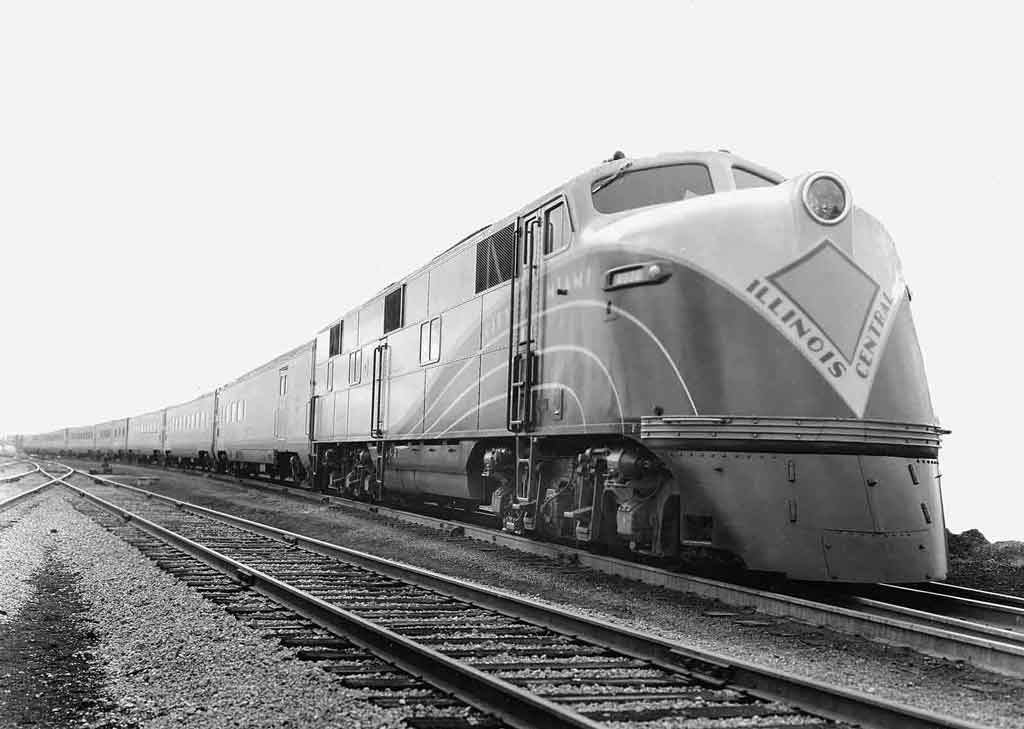
The City of Miami passenger train one of three coordinated services linking Chicago with Miami. There was a time — like, as recently as 1979 — there was direct rail passenger service between the Upper Midwest (notably Chicago) and Florida. This ended with several slashes of Amtrak routes as a result of budget […]
Read More…
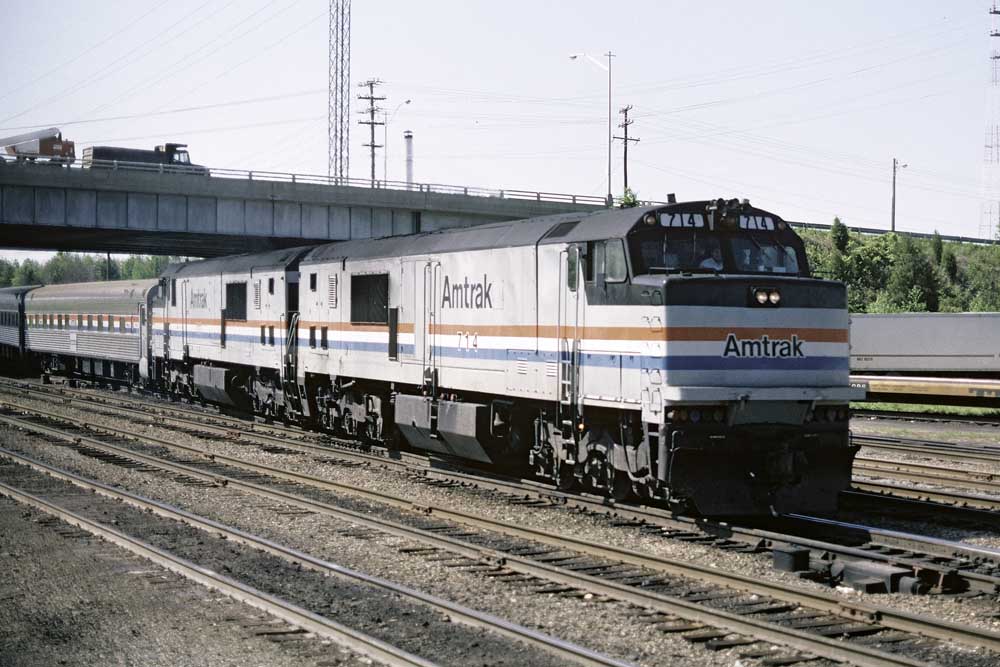
The Amtrak GE P30CH locomotive is the spiritual successor to the GE U30CG passenger locomotive of 1967. Amtrak acquired 25 of the P30CH model, Nos. 700-724, between August 1975 and January 1976. The model designation led to the units’ nickname: “pooch.” It was essentially a U30C freight locomotive with a cowl body and […]
Read More…
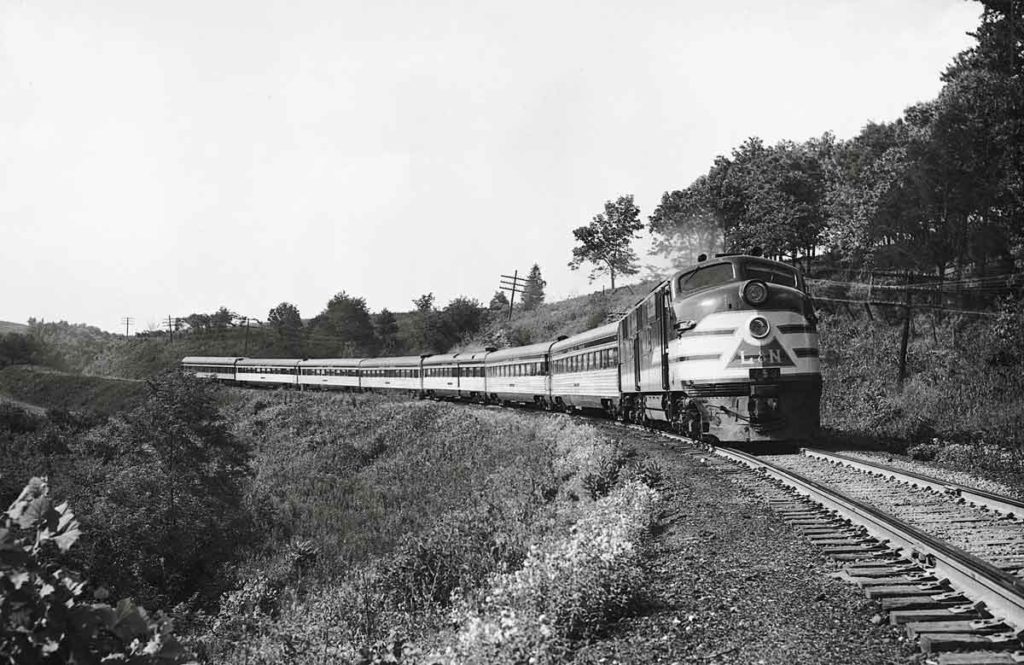
A single E6 diesel leads Louisville & Nashville’s Cincinnati–New Orleans Humming Bird through Turner, Ky., in 1948. A rebuilt heavyweight sleeper trails the original six lightweight cars of the streamliner. L&N photo […]
Read More…
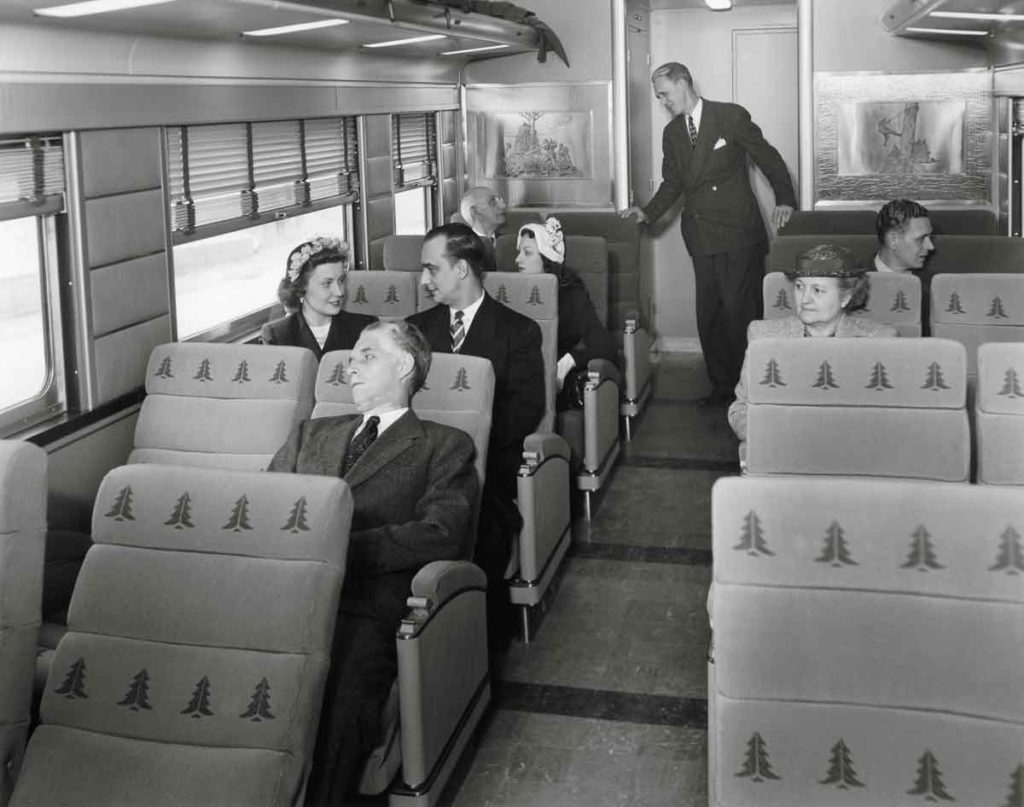
Great Northern’s postwar streamliners between Seattle and Vancouver, the Internationals, carried 60-seat coaches with a pine-tree motif in their upholstery. GN photo […]
Read More…
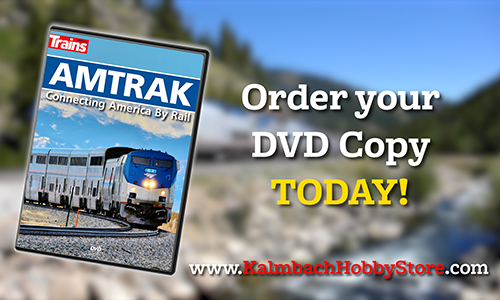
Amtrak: Connecting America by Rail DVD | 16127 Explore the captivating history and exciting future of Amtrak with our exclusive Amtrak DVD, available at the Kalmbach Hobby Store. Dive into over 50 years of remarkable transit adventures as Amtrak weaves its way through the nation’s most scenic routes, national parks, bustling cities, and charming towns. […]
Read More…
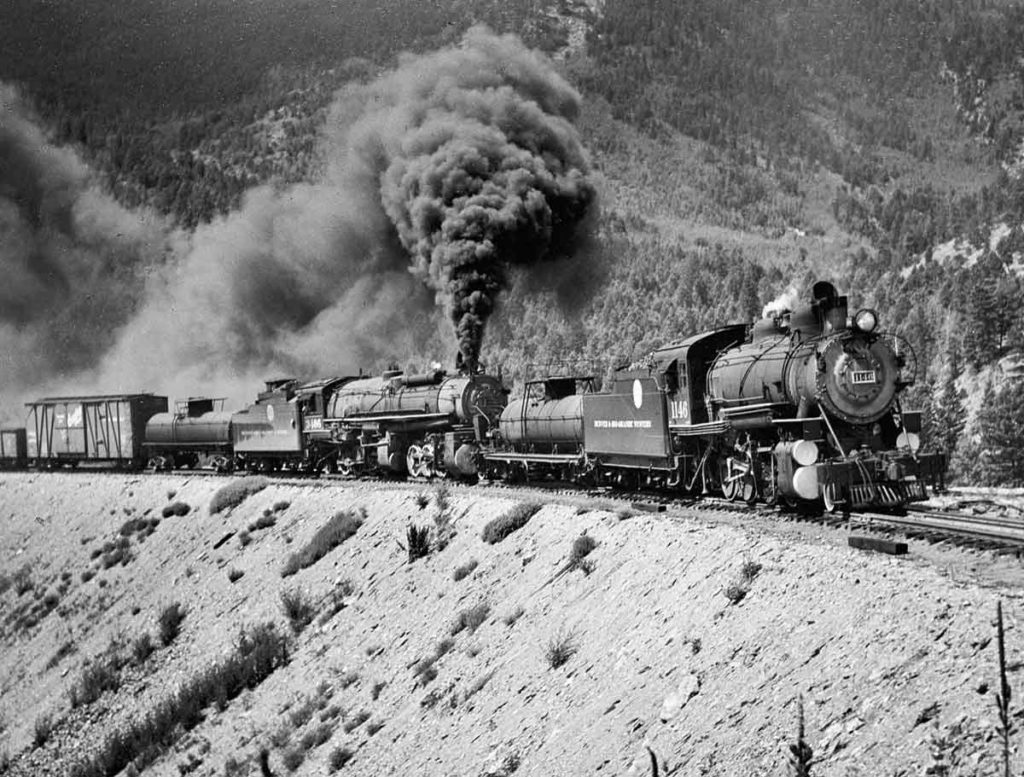
Denver & Rio Grande Western 2-8-0 1146 helps 2-8-8-2 Mallet 3406 hoist a 27-car freight up the 2-percent grade between Crags and Crescent, Colo., in July 1938. Both engines have tank cars behind them for extra water capacity. R. H. Kindig photo […]
Read More…
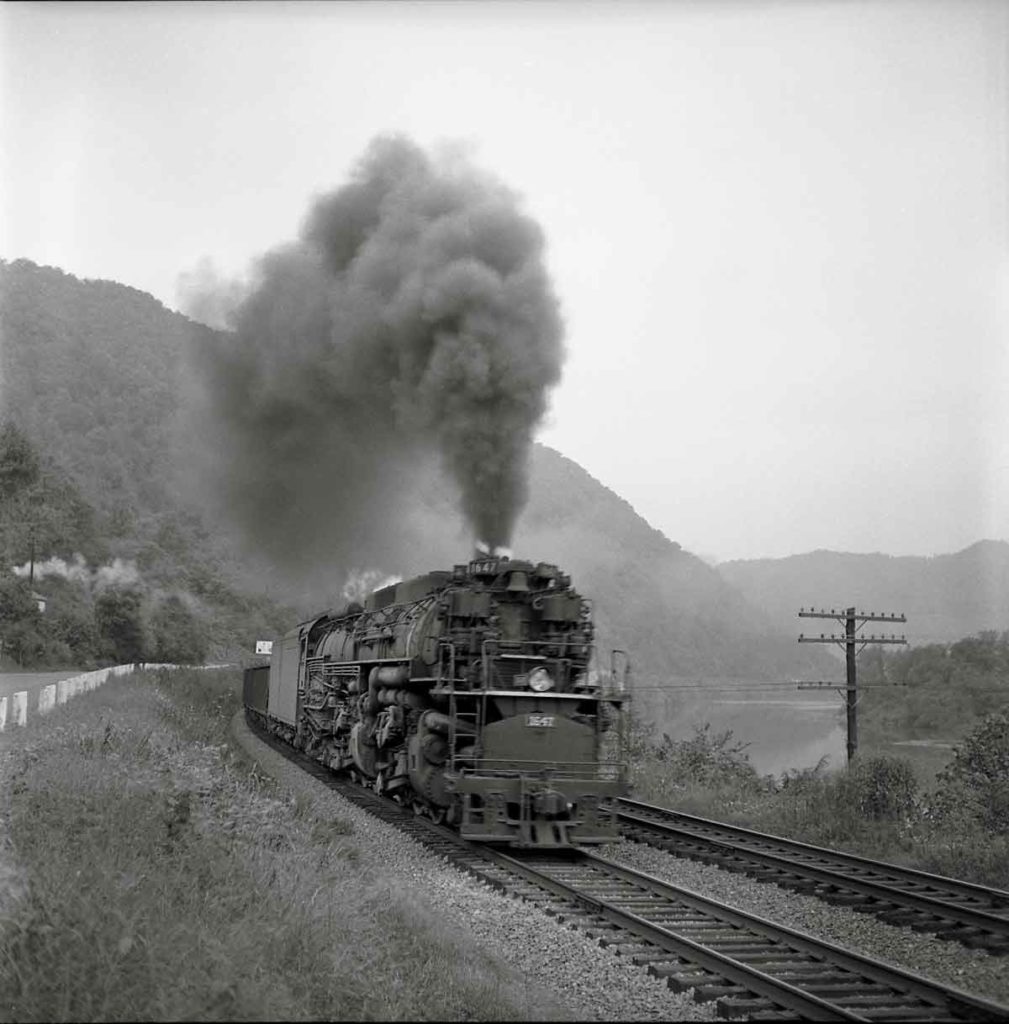
Chesapeake & Ohio 2-6-6-6 No. 1647 makes 40 mph along the Kanawha River east of Handley, W.Va., with coal bound for the piers at Newport News, Va. Philip R. Hastings photo […]
Read More…









